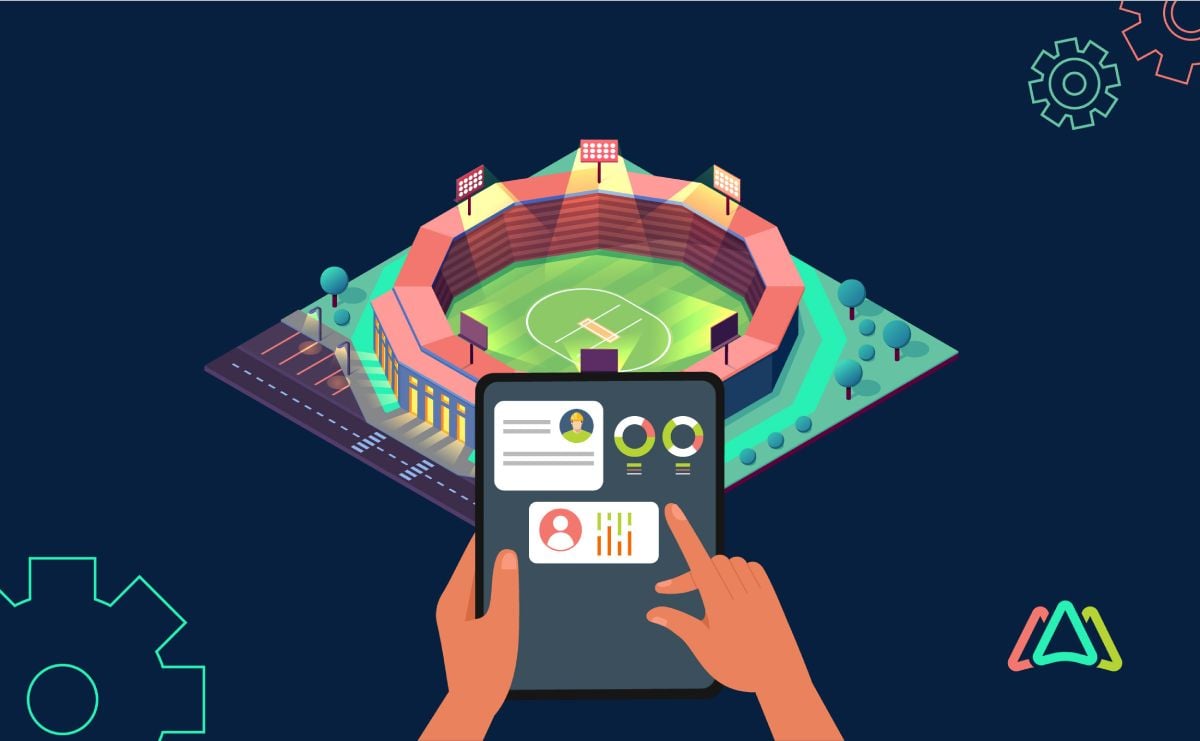
Score Big with Efficient Sports Facility Management
In the world of sports, it's not just the athletes on the field or the roar of the crowd that make an event memorable. Behind every successful sports event, a team of dedicated professionals ensures that the venue is in good condition. This behind-the-scenes effort is known as sports facility management, and it plays an essential role in the overall success of any sporting event or facility.
Sports facility management consists of a wide range of responsibilities, from designing and maintaining venues to ensuring safety, optimizing financial performance, and enhancing the overall experience for athletes and spectators alike. The importance of effective sports facility management cannot be overstated, as it directly impacts the quality of the sporting experience and the success of sports organizations.
The Role of Facility Management in Improving Athlete and Spectator Experiences
At its core, sports facility management is all about creating an environment where athletes can perform at their best, and spectators can enjoy an unforgettable experience. Athletes depend on well-maintained facilities to train and compete safely, and spectators expect clean, comfortable, and secure venues that enhance their enjoyment of the event.
Facility management professionals work tirelessly to ensure that the playing surfaces are in peak condition, the seating arrangements are comfortable, and the facilities are equipped with the latest technology to enhance the overall experience. They also play a critical role in event planning and coordination, ensuring everything runs smoothly and safely during the event.
In addition to the physical aspects, facility managers are also responsible for financial planning and management. They must find innovative ways to generate revenue, control costs, and ensure the long-term sustainability of the sports facility. This financial stability is essential for providing athletes with the best possible training environment and delivering the best experiences for spectators.
Diverse Sports Facilities that Require Efficient Management
Sports Facility Management isn't a one-size-fits-all endeavor. It encompasses a diverse range of facilities, each with its own unique set of challenges and requirements. The following are the vast array of venues that fall under the umbrella of sports facility management:
1. Stadiums and Arenas
Stadiums and arenas are the grand stages where some of the most iconic sporting events unfold. From football and soccer to basketball and hockey, these venues host large crowds and demand meticulous planning. Sports facility managers here must oversee seating arrangements, security, concessions, and even the entertainment experience.

2. Athletic Fields and Courts
The green expanses of athletic fields and the crisp lines of courts are the training grounds and battlefields for athletes. Maintaining these spaces requires expertise in turf management, court resurfacing, and ensuring that playing surfaces meet safety standards.
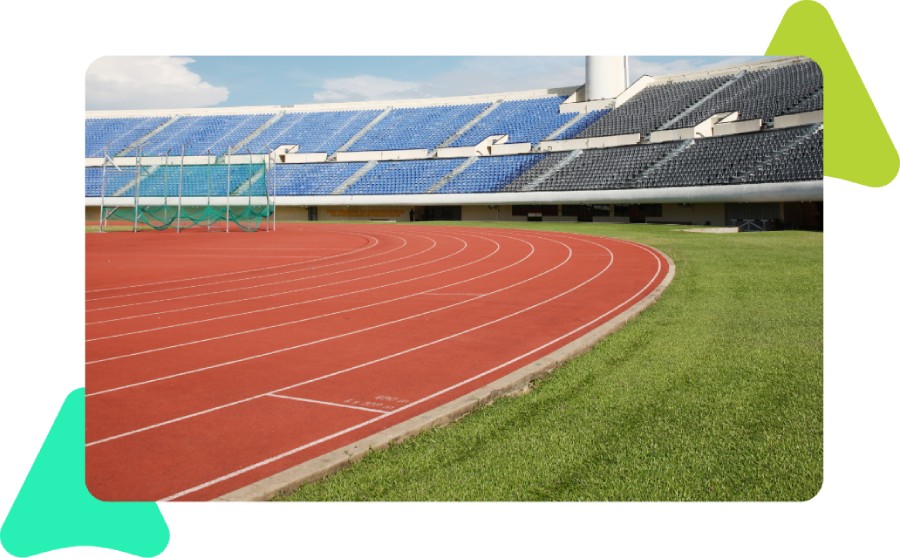
3. Training Centers and Gyms
Athletes require top-notch training facilities to hone their skills and keep in shape. Training centers and gyms are equipped with state-of-the-art equipment and specialized spaces for strength training, conditioning, and recovery. Effective facility management ensures athletes have access to these resources in a well-maintained environment.

4. Aquatic Centers and Pools
Aquatic centers and pools are home to swimmers, divers, and other water sports athletes. Keeping pools at the right temperature, balancing chemicals, and maintaining safety standards are paramount in these facilities.

5. Indoor and Outdoor Track Facilities
Whether indoors or outdoors, track facilities demand regular maintenance and safety checks. From track resurfacing to equipment management, sports facility managers play a vital role in supporting athletes in their pursuit of speed and excellence.

6. Recreation Centers
Recreation centers cater to a broad audience, offering a range of activities from racquet sports to fitness classes. Facility managers here need to balance diverse programming while ensuring equipment and facilities are available and safe for use.

7. Equestrian Centers
Equestrian facilities house both horses and riders, necessitating specialized care. Proper stables, riding arenas, and health management are all essential aspects of managing these unique venues.

8. Ice Rinks
Ice rinks are a cold but captivating part of the sports facility landscape. They require precise temperature control, ice maintenance, and safety measures to facilitate ice sports like hockey and figure skating.

9. Sports Complexes
Sports complexes are comprehensive venues with multiple facilities under one roof. They require intricate scheduling and coordination, offering a variety of sports and activities in a single location.

10. Tennis Clubs and Courts
Tennis clubs and indoor and outdoor courts are where racket sports enthusiasts come together. Proper court maintenance, lighting, and booking systems are essential for a stellar experience.

Key Components of Sports Facility Management
1. Facility Planning and Design
Behind every remarkable sports facility, a meticulously thought-out plan and design lays the foundation for success. Facility planning and design are fundamental components of sports facility management, consisting of several aspects that shape the facility's purpose, functionality, and long-term sustainability.
1.1 Assessing Needs and Goals
The journey of designing and planning a sports facility begins with a thorough assessment of needs and goals. This involves understanding the specific requirements of the athletes, teams, and spectators who will use the facility. Key considerations include:
- Sport-specific requirements: Different sports demand distinct facilities. For instance, a basketball court has different requirements than a soccer field or a swimming pool.
- Capacity and seating: Determining the facility's capacity and seating arrangements is essential to accommodate the expected audience while providing a great viewing experience.
- Access and convenience: Accessibility for athletes, spectators, and staff, including parking, entry points, and amenities, must be carefully planned.
- Future-proofing: Anticipate future needs and trends to ensure that the facility remains relevant and adaptable over time.
1.2 Budget Considerations
Sports facility managers must balance providing the best facilities and managing costs effectively. This includes:
- Cost estimation: Calculate the expenses associated with construction, equipment, maintenance, and operational costs to stay within budget.
- Funding sources: Identify and secure funding sources, including public funds, private investments, or sponsorships, to ensure financial viability.
- Cost-effective design: Collaborate with architects and engineers to create cost-effective designs without compromising functionality or safety.
1.3 Sustainability and Environmental Considerations
Modern sports facility management places a strong emphasis on sustainability and environmental responsibility. Incorporating eco-friendly practices into facility planning and design is ethical and cost-effective in the long run. Key considerations include:
- Energy efficiency: Design facilities with energy-efficient lighting, heating, and cooling systems to reduce operational costs and environmental impact.
- Green maintenance: To promote sustainability, select sustainable materials for construction and maintenance, such as recycled or locally sourced materials.
- Waste management: Implement effective waste management and recycling programs to reduce the environmental footprint of sports facilities.
- Environmental impact assessment: Conduct assessments to understand and mitigate the environmental impact of facility construction and operation.
2. Operations and Maintenance
Once the blueprints are drawn and the foundations are set, the heart of sports facility management lies in efficient operations and maintenance.
2.1 Regular Inspections and Maintenance Routines
These routines are designed to keep every aspect of the facility in optimal condition. Key aspects include:
- Structural Integrity: Ensure the structural soundness of buildings, seating, and equipment to prevent accidents and costly repairs.
- Playing Surfaces: Maintain the quality and safety of playing surfaces, which include grass fields, courts, tracks, and ice rinks.
- Equipment: Regularly inspect and service sports equipment, such as goalposts, nets, scoreboards, and safety gear. This also includes fixed assets such as chillers, boilers, air handlers, condensing units, and electrical equipment.
- Facility Amenities: Oversee the condition of spectator seating, restrooms, concessions, and other amenities to enhance the visitor experience.
- Utilities: Manage electrical, plumbing, and HVAC systems to ensure they run efficiently and comply with safety standards.
2.2 Safety Protocols and Emergency Planning
Robust safety protocols and emergency planning are essential to protect athletes, spectators, and staff. Key aspects include:
- Emergency Response Plans: Develop comprehensive emergency response plans for various scenarios, including medical emergencies, severe weather, and security threats.
- Safety Training: Provide ongoing safety training to staff, including first aid, CPR, and evacuation procedures.
- Security Measures: Implement security measures such as surveillance systems, access control, and crowd management protocols.
- Compliance: Ensure compliance with safety regulations and codes, including ADA accessibility standards and fire safety measures.
2.3 Utilization of Technology and Software for Maintenance
In the digital age, technology plays a pivotal role in sports facility management. Advanced software and systems simplify tasks, streamline operations, and enhance decision-making. Key technological aspects include:
- Computerized Maintenance Management Systems (CMMS): Implement CMMS software to schedule preventive maintenance, manage work orders, and track equipment performance. CMMS solutions provide real-time data to optimize maintenance practices.
- IoT and Sensor Technology: Utilize Internet of Things (IoT) devices and sensors to monitor equipment and facility conditions in real time, enabling predictive maintenance and reducing downtime.
- Data Analytics: Harness data analytics to make informed decisions regarding maintenance schedules, resource allocation, and energy efficiency.
3. Financial Management
Whether it's a local gym or a massive stadium, managing finances requires a strategic approach that balances budgets, generates revenue, and plans for the long term.
3.1 Budgeting and Cost Control
Budgeting and cost control are the financial bedrock of sports facility management. It's about ensuring that the revenue and expenses are managed efficiently to achieve financial stability. Key considerations include:
- Operating Budgets: Create detailed operating budgets that outline expected income and expenses for the year ahead. This includes everything from staff salaries to utilities and maintenance costs.
- Cost Control: Implement measures to keep expenses in check, such as energy-efficient technologies, inventory management, and staff optimization.
- Variance Analysis: Regularly analyze budget variances to identify areas where costs may exceed projections and make adjustments accordingly.
3.2 Revenue Generation Strategies
While cost control is essential, successful sports facility management also involves actively seeking revenue streams. These include:
- Ticket Sales: Develop pricing strategies and ticketing systems to maximize revenue from events, games, and tournaments.
- Sponsorships and Advertising: Partner with sponsors and offer advertising opportunities within the facility to generate additional income.
- Concessions and Merchandise: Manage concessions and merchandise sales to optimize revenue per attendee.
- Events and Rentals: Rent out facilities for non-sporting events, such as concerts, conferences, and exhibitions, to generate supplementary income.
- Membership Programs: Offer membership programs and loyalty incentives to attract regular users and recurring revenue.
3.3 Long-Term Financial Planning
Long-term financial planning is about ensuring the facility's financial health in the future. This involves:
- Capital Investments: Identify and plan for significant capital investments, such as facility expansions, renovations, or technology upgrades.
- Reserve Funds: Establish and maintain reserve funds for future capital expenditures and unexpected expenses, providing financial stability.
- Debt Management: If applicable, manage any existing debt, such as loans for facility improvements, by adhering to repayment schedules and exploring refinancing options.
- Risk Mitigation: Implement risk management strategies to minimize financial exposure due to unforeseen events, including disasters, economic downturns, or legal liabilities.
- Diversification: Explore ways to diversify revenue streams to reduce reliance on a single source of income, thus increasing financial resilience.
Leveraging a CMMS or Sports Facilities Management Software
The primary purpose of a CMMS is to streamline maintenance processes, enabling facilities to optimize their maintenance strategies, reduce downtime, enhance asset longevity, and ensure the safety and satisfaction of staff and patrons. It accomplishes this by centralizing information, automating scheduling, facilitating communication, and providing detailed reports and analysis. A sports facilities management software on the other hand offers a more comprehensive solution to manage sports facilities, including maintenance functions offerings by a CMMS.
1. Preventive Maintenance Scheduling
Preventive maintenance scheduling is one of the key features of a Computerized Maintenance Management System (CMMS) within sports facilities. It allows facility managers to set up recurring maintenance tasks, inspections, and asset check-ups to ensure that all equipment and facilities are in peak condition. This proactive approach aids in identifying potential issues before they escalate, reducing unexpected breakdowns, and ensuring asset longevity and optimal performance.
Benefits:
- Reduced Downtime: Regularly scheduled maintenance reduces the occurrence of equipment failures, minimizing disruptions to facility operations.
- Extended Asset Life: Preventive maintenance helps prolong the assets' lifespan by proactively addressing wear and tear.
- Improved Performance: Regular maintenance ensures that all facility components work efficiently, guaranteeing optimal performance during events.
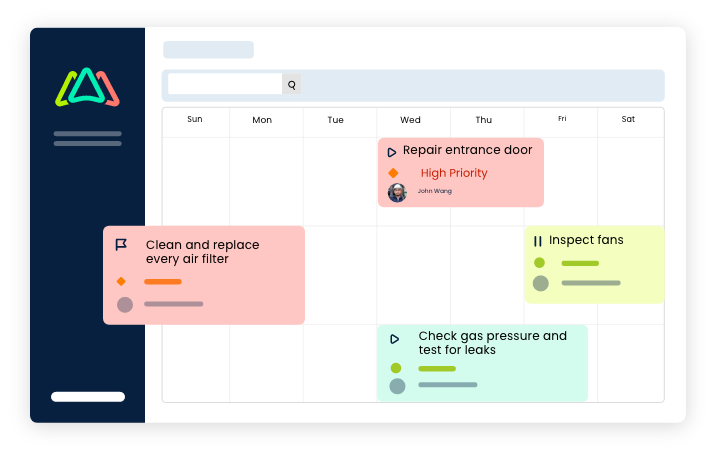
2. Work Order Management
Work order management facilitates the creation, assignment, prioritization, tracking, and completion of work orders efficiently, ensuring smooth and timely execution of maintenance tasks. It allows facility managers to allocate resources effectively, track progress in real-time, and ensure that all maintenance activities are completed satisfactorily.
Benefits:
- Efficient Resource Allocation: Through effective work order management, resources can be assigned where they are most needed, optimizing labor and materials.
- Real-time Progress Tracking: Managers can monitor the status of work orders in real-time, allowing for swift adjustments and immediate response to arising issues.
- Improved Productivity: Efficient handling of work orders enables maintenance teams to complete tasks promptly, improving overall productivity.
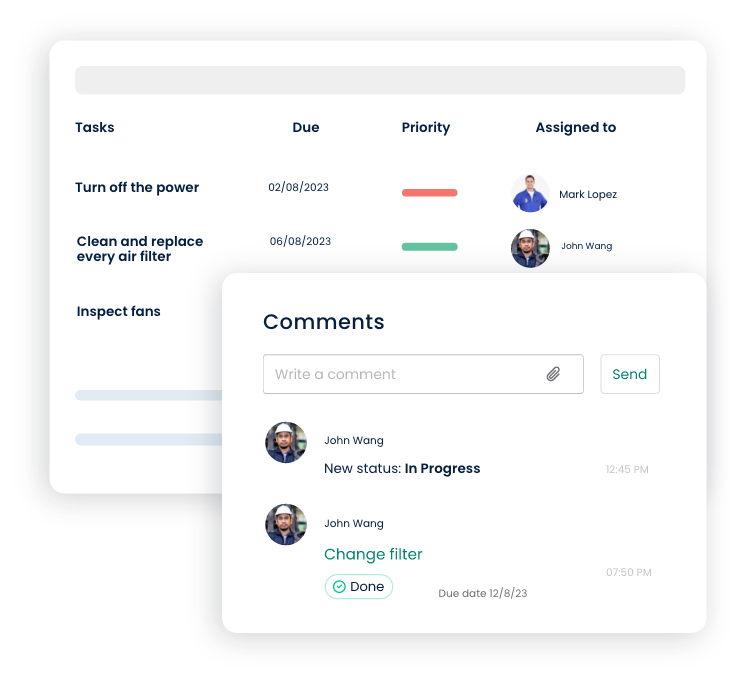
3. Asset Tracking and Management
A CMMS enables comprehensive asset tracking and management, allowing sports facility managers to monitor each asset's condition, maintenance history, and performance. This functionality provides a detailed overview of asset status, helping in optimizing asset utilization, planning maintenance activities, and making informed replacement or refurbishment decisions.
Benefits:
- Optimal Asset Utilization: Real-time asset monitoring allows for the optimal allocation and utilization of assets, avoiding overuse and premature wear.
- Informed Decision-Making: The detailed asset information provided by a CMMS aids managers in making data-driven decisions regarding asset maintenance, replacement, or upgrades.
- Improved Asset Lifespan and Performance: Through meticulous asset management, the lifespan and performance of assets can be maximized, reducing operational costs and ensuring the readiness of facilities for events.
![]()
Mobile CMMS for Facility Staff
Mobile CMMS are software applications designed to run on smartphones, tablets, and other mobile devices, allowing facility staff to manage maintenance tasks on the go. These applications offer a range of functionalities, from creating and assigning work orders to tracking asset condition and performance, enabling swift and efficient management of facilities. Some of its features and benefits include:
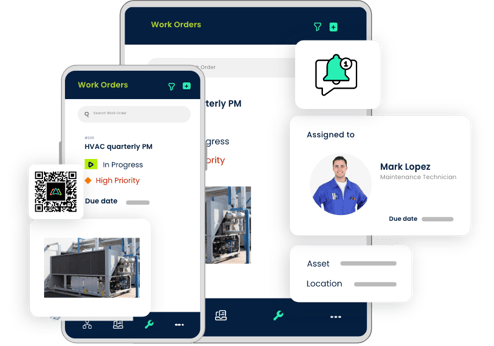
Real-Time Notifications and Alerts
Facility staff receive immediate notifications about maintenance tasks, ensuring prompt response and resolution of issues. Alerts about asset conditions and performance anomalies allow for immediate corrective actions, reducing downtime.
Remote Access to Information
Staff can access maintenance schedules, asset information, and work orders from anywhere, facilitating on-the-go management and decision-making. The availability of critical data at the fingertips allows for better coordination and communication among team members.
Work Order Management
Staff can create, assign, prioritize, and track work orders directly from their mobile devices, optimizing resource allocation and task execution. Mobile apps enable the swift updating of work order status, facilitating seamless workflow management and enhancing overall productivity.
Asset Tracking and Management
Mobile CMMS apps allow staff to monitor and manage assets remotely, ensuring optimal asset utilization and performance. Access to real-time asset data aids in informed decision-making regarding maintenance activities, asset allocation, and replacement.
Efficiency and Productivity
The convenience and accessibility of mobile apps allow facility staff to manage their tasks more efficiently, reducing the time spent on administrative work. Enhanced access to information and streamlined work order management improve productivity and operational efficiency.
Improved Communication and Collaboration
Mobile apps facilitate instant communication between team members, enabling better coordination and collaboration in task execution. The sharing of real-time information and updates through mobile apps promotes a more cohesive and synchronized working environment.
Enhanced Data Accuracy and Integrity
Mobile CMMS apps enable the immediate logging and updating of information, reducing the risk of data errors and discrepancies. Accurate and up-to-date data contribute to better analysis and decision-making, ensuring the reliability and effectiveness of maintenance strategies.
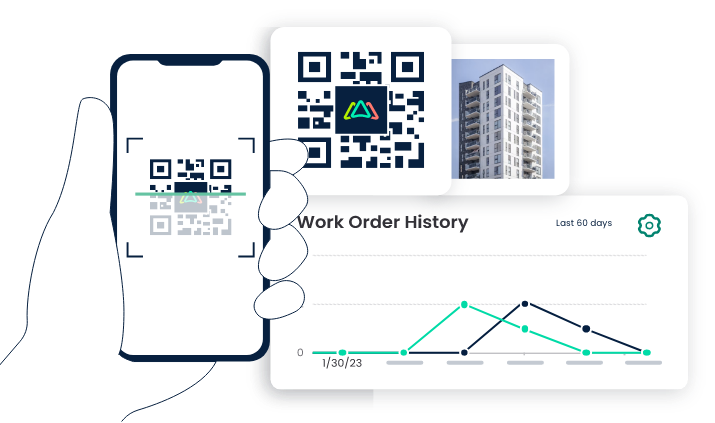
Case Study: Stadium Maintenance and the Rams' Relocation to Los Angeles
“Stadiums shouldn’t be a competitive disadvantage”
- Stan Kroenke (LA Rams Owner)
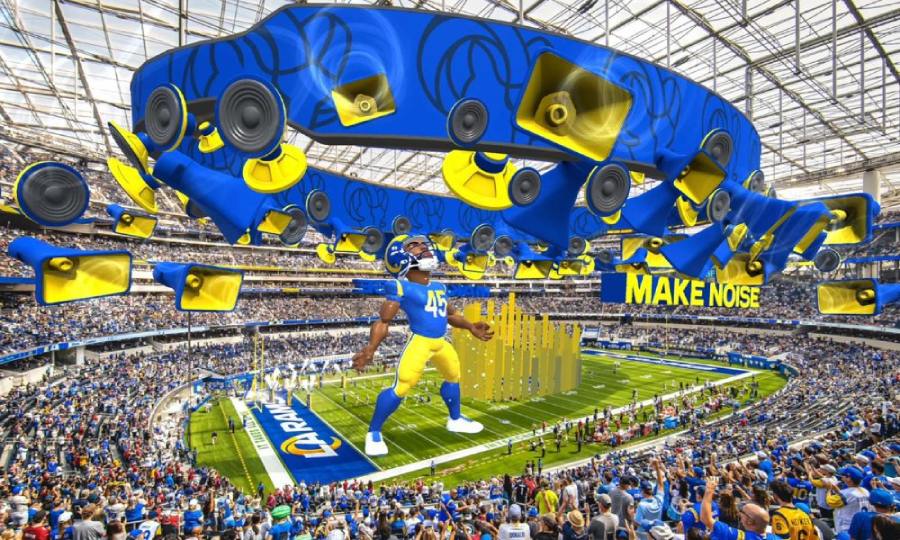
Image: LA Rams at the SoFi Stadium
The relocation of the St. Louis Rams to Los Angeles in 2016 was shaped significantly by stadium maintenance challenges and considerations.
Background:
The Rams had called St. Louis home since 1995, playing their games at the Edward Jones Dome.
Stadium Maintenance Challenges:
Aging Stadium Infrastructure: One of the central issues was the aging infrastructure of the Edward Jones Dome. Over the years, the stadium had fallen behind in modern amenities and the fan experience.
Funding for Renovations: Efforts to secure funding for stadium renovations or the construction of a new stadium in St. Louis faced obstacles, including public opposition and political challenges.
NFL Stadium Standards: The NFL has stringent standards for its stadiums, including seating capacity, technology, and fan amenities. The Edward Jones Dome struggled to meet these standards.
Market Opportunities and Maintenance:
Los Angeles Market: The NFL recognized the untapped potential of the Los Angeles market, which had been without an NFL team since the early 1990s. The market offered opportunities for revenue growth and a state-of-the-art stadium.
SoFi Stadium: The Rams' move was closely tied to the construction of SoFi Stadium in Inglewood, California. This modern venue promised world-class amenities and a premium fan experience.
Relocation and Stadium Transformation:
The Rams' decision to return to Los Angeles was not just about relocating a team. It was also about relocating the team to a new stadium that set new standards for the NFL. SoFi Stadium, with its advanced technology, seating capacity, and luxury suites, represented a significant leap forward in stadium design and maintenance. The move to a modern stadium allowed the Rams to offer fans an upgraded experience while addressing the maintenance and infrastructure challenges that had hindered their previous home.
Impact and Legacy:
The relocation of the Rams to Los Angeles marked a shift in how the NFL and teams approached stadium maintenance and development. It emphasized the importance of maintaining stadiums that meet NFL standards while also considering the market opportunities and fan experience. SoFi Stadium, as the new home of the Rams, has become a symbol of innovative stadium design and maintenance excellence in the NFL.
TABLE OF CONTENTS
Keep Reading
Ever find yourself checking into a luxury hotel and expecting a relaxing stay, only to find a ...
11 Apr 2025
Organizations are witnessing swift changes in the business environment and confronting a ...
8 Apr 2025
Last month, news outlets and the entire internet was abuzz with the return of NASA astronauts ...
3 Apr 2025
What comes first - CMMS or predictive maintenance? If your answer is either, it is correct. ...
28 Mar 2025
Artificial intelligence (AI) talk has become commonplace. Today, engaging in business-focused ...
27 Mar 2025
Imagine a world where machines predict, diagnose, and fix their issues before they fail. This ...
25 Mar 2025
A facility maintenance plan is at the core of a facility’s operations. This organized ...
21 Mar 2025
Think of managing your maintenance operations like managing a championship sports team. Just ...
21 Mar 2025
The maintenance sector is battling a severe talent shortage that threatens to undermine ...
7 Mar 2025
Manufacturing maintenance is the backbone of industrial efficiency, ensuring machines run ...
5 Mar 2025
No one likes playing a guessing game when equipment breaks down. Yet, maintenance teams often ...
4 Mar 2025
The size of the preventive maintenance software market is discussed in millions of dollars, ...
4 Mar 2025
The organizational structure and corporate hierarchy vary from company to company. Large ...
28 Feb 2025
Maintenance procedures are essential for ensuring the longevity and reliability of machinery ...
21 Feb 2025
Sustainability is no longer just a buzzword; it's a critical component of corporate social ...
20 Feb 2025
A Computerized Maintenance Management System (CMMS) relies on accurate, well-organized data ...
18 Feb 2025
In an era where technology drives operational efficiency, Computerized Maintenance Management ...
14 Feb 2025
A Computerized Maintenance Management System (CMMS) is a key component of modern maintenance ...
13 Feb 2025
Introduction Maintenance management is the foundation of maintenance operations in industries ...
11 Feb 2025
Introduction A Computerized Maintenance Management System (CMMS) is software designed to help ...
7 Feb 2025





